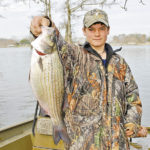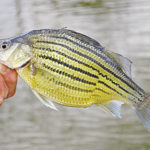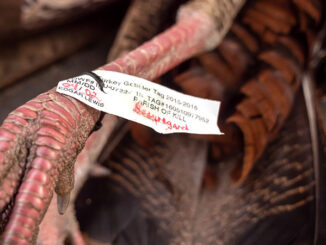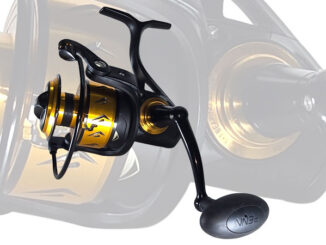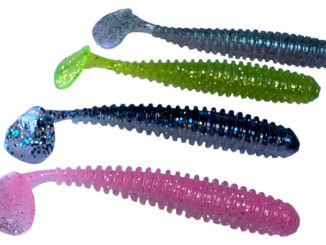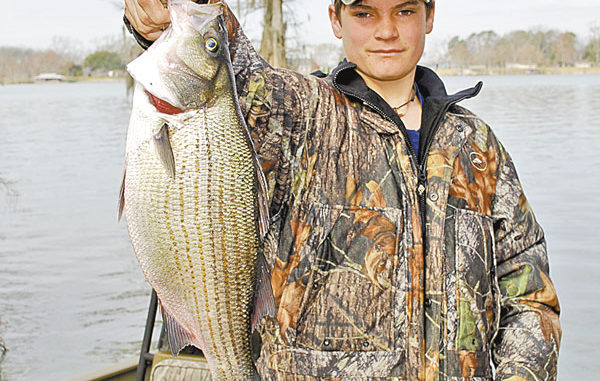
A large segment of Louisiana’s freshwater fishing community has become obsessed with black bass, almost to the exclusion of interest in other fish. Two species of black bass live in Louisiana waters, the largemouth and the spotted. Both of them, as well as the cooler-water smallmouth black bass, which is not found in the state, are eligible for entry in Bass Angler Sportsman Society tournaments.
Lost in the furor over competitive black bass fishing are three other species of bass native to the state: yellow bass, white bass and striped bass. The three species, along with their Atlantic Coast cousin, the white perch (not what we call white perch in Louisiana), make up the family Moronidae, commonly called temperate basses.
The closest relatives to the temperate basses are the temperate perches, a 22-species family centered in Australia. Their next-closest kin are the saltwater groupers rather than freshwater black basses, as one might expect.
All three species are marked by bold black stripes that run the length of their bodies. All three will voraciously attack both artificial lures and live baits, especially in the cooler months of the year. All three are extremely hard fighters. Most anglers not carrying a wagonload of bias will admit that a 2-pound white bass will outfight a 2-pound largemouth any day. They just don’t jump as much.
All three also have the reputation as substandard table fare. While they can’t measure up to crappie (what fish can?), the rap is unfair, especially in the case of the largest of the clan, the striped bass.
Yellow and white bass are more common in Louisiana than striped bass. When fishermen aren’t busy lumping them all indiscriminately under the name “striper,” these two species are commonly called “barfish.” Beyond the fact that both have needle-like fin spines as well as razor-sharp gill covers that can gash a careless fisherman’s hand, they are distinctly different.
The yellow bass is the smallest in the clan. Although the world record is 2 pounds, 9 ounces, anything approaching ¾-pound is a good fish in Louisiana. The species is best identified by its yellow body color, which becomes especially pronounced during its February-March spawning season.
Another distinguishing characteristic that it shares with no other member of the family is that the black bars on the lower half of the fish, near the anal fin, are broken and offset, like an earthquake hit them and created a fault line.
Yellow bass seems to tolerate low-oxygen conditions better than its two cousins. It can be found in back-swamp lakes as well as rivers and reservoirs. It is the only one of the three that can reproduce with no access to flowing water.
White bass in Louisiana are perhaps most common in large rivers and reservoirs, although in the late winter and early spring when waters are cool and hold a lot of oxygen, they will invade almost any overflow habitat to gorge before spawning.
Ocasionally, like the yellow bass, the black bars above its anal fin may be slightly broken and offset, but the base color between the black bars is white or silver, hence the name. The body color and the lack of a dependable break in the bars makes the fish similar to striped bass and the hybrid striped bass, creating endless confusion among anglers.
An external distinguishing feature that separates the white bass from its cousins is that typically only one black bar will extend all the way to the base of the tail. Hybrid stripers and stripers will have more than one such bar. A fail-safe way of separating the species is to feel for the teeth on the back of the tongue near its center. A white bass has only one such patch. The other two species have two patches.
White bass grow larger than yellow bass, but not nearly as large as stripers and hybrids. The Louisiana record fish, a 6.81-pounder caught by Corey Crochet in the Amite River in August 2010, tied the previous world-record fish caught in Lake Orange, Va.
Called “sand bass” or “sandies,” along with several other names, white bass have developed a big following among anglers. In Midwestern reservoirs, schools of white bass force shoals bait minnows to the surface. In these “jumps,” they will take any bait presented to them.
In many places in the eastern United States, anglers look forward to the spring, when the fish mass to make their annual spawning run up rivers. During these runs, fishermen can catch white bass until their arm muscles burn with fatigue.
Here in Louisiana, we by and large ignore them.
White bass prey heavily on smaller fish, but a live river shrimp impaled on a hook will bring every white bass in the vicinity on the run.
The heavyweight slugger of the family is the striped bass. The IGFA world record is 78 pounds, 8 ounces, although believable reports have been made of stripers of over 100 pounds occurring in old-time commercial fishing catches. The Louisiana record of 47.50 pounds was made in 1991. Every striper in the top 10 except one, the No. 9 fish, was taken before 1992.
Striped bass found in the Gulf States were once a separate race from Atlantic Coast striped bass and occurred only from the Florida Panhandle through the small rivers that drained into Lake Pontchartrain. Since 1965, the Louisiana Department of Wildlife and Fisheries has been releasing hatchery-produced stripers (from Atlantic Coast races) and, sporadically, hybrid striped bass in Louisiana waters. Other state agencies have done so as well, and if any fish were left from the original populations, they have likely been bred out of existence.
Presently, striped bass can be found throughout the fresh waters of the state, and spawning populations appear to exist in the Atchafalaya and Mississippi rivers. Striped bass must have flowing waters to spawn. Unlike white and yellow bass, whose eggs sink to the bottom and stick to hard surfaces, striper eggs balloon with water and float, so current is necessary to suspend them while they develop.
While at first glance they seem to resemble white bass, stripers are distinctly different. Their black stripes are knock-your-eyes-out-bold, and run the length of the fish unbroken. The fish is also shaped differently than the flat-sided white, yellow and hybrid striped bass. It is round in cross section and the entire fish is distinctly torpedo-shaped.
Adult stripers specialize on feeding on fish and seem to focus on bright silvery fish such as gizzard shad, threadfin shad and skipjack herring (slickers). Like their prey, they live in open water and have absolutely no inclination to use cover to ambush their supper like largemouth bass do. At all times of the year, striped bass seem to be attracted to points of water current or current breaks.
The fly in the ointment in temperate bass identification are the striped bass/white bass hybrids. Created by humans, the creatures carry the names “wiper,” “sunshine bass,” “whiterock bass” or “palmetto bass,” and are intermediate in appearance between white and striped bass.
Their body is flattened from side-to-side like a white bass, but not as much. Their stripes are unbroken like in the striped bass, but they are less bold, more favoring those in the white bass. Their maximum size is intermediate as well, with a 16.25-pound fish holding the state record and 27-pound 5-ounce world record.
Like white and striped bass, hybrid stripers are sensitive to low oxygen levels, and in periods of hot weather will move to deeper waters and almost cease feeding and
moving.
Jerald Horst is author of six books on fish and seafood, including the acclaimed Trout Masters: How Louisiana’s Best Anglers Catch the Lunkers. His latest book is Game Warden: On Patrol in Louisiana. Both are available at www.LouisianaSportsman.com or by calling (800) 538-4355.
